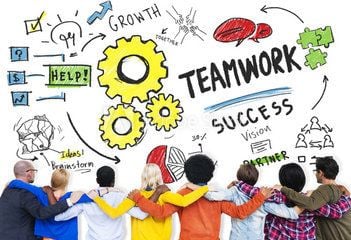By Eric Brisbon
The evolution of humankind and behavior is fascinating. All day, every day we all live in an environment that elates us by seeing miraculous achievements and frustrates us with dark and devious actions. Over time, general behavior changes and morphs depending on your demographics, personal believes systems, religious views, family environment, political influence, educational tactics and technology.
Admittedly, I am a Boomer, so I have seen a few years of those changes (anyone who thought “OK Boomer” when they read that is exactly what I am talking about). Cultural changes effect our day in so many ways that it becomes almost invisible and simply part of the fiber of daily living. It evolves so slowly that it’s analogous to getting over a cold. You are not quite sure when you got over it, all you know is that you are feeling better. The same holds true with culture. I am not quite sure when it became acceptable that a cashier can’t make change, but it did.
The manufacturing workplace has also evolved significantly in the past 50 years. Technology has impacted overall workplace culture in many ways. New CAD/CAM tools, measuring and data collection systems, machine tool improvements and overall capability increases have aided many companies with increases in productivity and quality. At the same time, cell phones, for example, created a huge management challenge years ago as they gained popularity. It’s hard to evaluate the investment impact of a new machine tool addition when the operator is busy texting their outside concerns. Back in the day many mangers simply refused to allow them; a very predicable but myopic view. While perhaps there are companies that still try and enforce that strategy, it’s like trying to push a rope. It’s simply not going to work.
Many cultural issues, in addition to simple technology, have become today’s norm. Employees tend to job hop, family dynamics are more impactful then ever, values are harder to predict, and true “no spin” facts are more difficult to find. All told, “We are not in Kansas anymore.”
While it is arguable that technology and many other extraneous pressures have had huge cultural impacts, it is also arguable that management operating systems have had to adjust and adopt to manage these changes. Fundamentally, companies had to ask themselves if command and control is the right answer, or if they should adopt functions that use the basic tenets of current day culture to allow the employee to make the right decisions to do a better job.
AMBAC International is a century old company that has seen its fair share of change. They have decided that the latter is the best approach; to address and adopt to cultural changes. AMBAC shares full financial disclosure weekly and teaches the workforce what it means, in dollars and cents, when actions or requirements are not met or ignored. Conversely, they celebrate wins and achievements with vigor and enthusiasm when the goals are reached or exceeded. All their workforce is learning the salient points of an income statement and they are beginning to understand that an increase in productivity helps them both personally (AMBAC shares the wealth) and their brethren in the workplace. Daily shop floor decision making improves, and behaviors start to change when people have straight, unbridled information about the workplace performance. Employees have a voice.
Cultural change is hard to adopt too as it’s ever-changing. However, keeping your faith in basic human behavior, remembering life is a two-way street and be willing to share the good and the bad makes the overall management system a much stronger tool.

